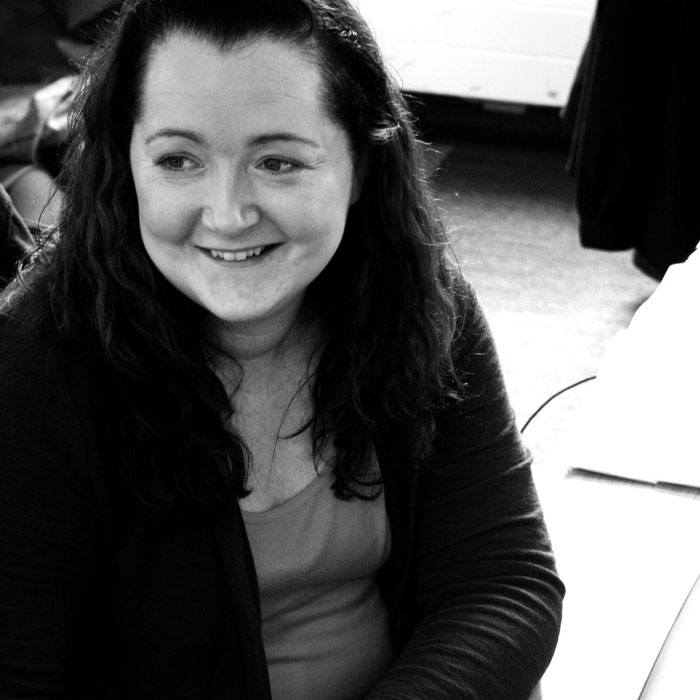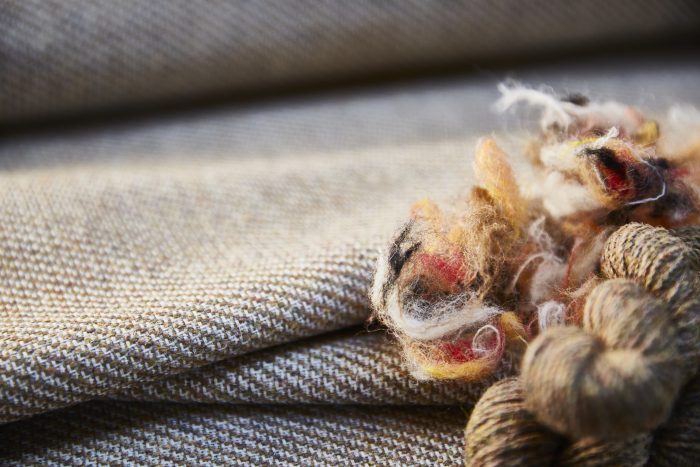Sustainable Innovation Interview Series: Jodie Padgett, Camira
Understandably sustainability is an important topic of conversation between Commercial Interior Designers and Suppliers. This series of interviews aims to share knowledge of new materials but goes on to challenge how circularity can succeed in the commercial sector and what that production model may look like. We also focus on action by asking our interviewees to share examples of how they’ve delivered sustainably innovative projects in order for the sector as a whole to learn and grow.
We sat down with Jodie Padgett to learn from her expertise as Lead Innovator at Camira.
Enjoy the full Sustainable Innovation Interview Series here

Please could you introduce yourself and your role?
My name is Jodie Padgett, and I am the lead innovator at Camira. My role involves managing our five-to-ten-year innovation plans for products across both contract and transport textiles. Innovation strategies encompass every aspect of how a piece of fabric is produced, from yarn to finished fabric, with sustainability as a key driver.
I work collaboratively with design & development, technical development, product compliance and sustainability teams to cross-fertilise ideas and drive newness and innovation. The innovation team and I translate high concept ideas into commercially viable products through research into new technologies, fabrics across all disciplines, yarns, finishes, post treatments and machinery. My role requires a deep understanding of the global textile market, as well as both current and future demands.

Revolution by Camira
What innovation have you found in materials suitable for commercial interiors?
In May 2023, Camira will launch a new recycled wool fabric, Revolution. Created in partnership with iinouiio, an advanced wool recycling capability that Camira acquired in 2022, Revolution is produced using reprocessed high value wool and textile waste. It is a truly closed loop textile which marks a new era in wool textile circularity.
Revolution is created during a process which sees Camira’s own waste wool yarn stripped back into fibre form and then blended with virgin wool, before being carded, spun, and woven into fabric. With an irregular twill weave, the unique fabric has an appealing surface detail and soft touch finish and performs to the highest commercial standards.
Additionally, Camira has developed a method of mixing bast fibres with wool to create commercial fabrics that perform to a higher flammability standard. Bast fibres have been around hundreds of years, with bast fibre plants producing textile fibre in the stems of nettles, hemp, flax and jute. However, Camira discovered that mixing nature’s own collection of rapidly renewable bast fibres with pure new wool, provided further enhanced performance and aesthetics and created sustainable fabrics which are inherently flame retardant. They are also biodegradable and contribute to the biodiversity of the fields in which they are grown. Some of our bast fibre fabrics are Main Line Flax, and Hemp.
Can circularity truly be integrated within a commercial interior project?
In a circular model, there is no waste; all materials are viewed as a resource. A new circular textiles system will require solutions that enable us to recycle textiles back into textiles without degrading quality. As a leader in our field, Camira has a responsibility to invest in research and development, as well as new technologies that can close the loop efficiently and cost-effectively.
The investment in iinouiio, is a continuation of Camira’s long-standing tradition in environmental stewardship and signals our commitment to accelerating work in textile circularity.
Many environmental impacts of a commercial interiors project are decided at the design stage. Therefore, it is crucial that everyone involved starts to implement a more sustainable way of thinking and has a much greater understanding of the materials that are being specified: where they are from, how they are made, processed, transported, installed and crucially what happens at the de-construction.
Many designers, start-ups, and manufacturing and processing companies are working on sustainable, bio-based materials, innovative processes, and new products to make interior furnishings healthier and more eco-friendly. But the success of the transition to circular design models doesn’t just depend on the ideas of individual companies. It’s primarily through collaboration that sustainable technologies for furniture and interior design emerge.
How have you addressed innovation within the production, and end of life, of your products?
Camira’s technical knitting capability, Camira Knit is an entirely waste free manufacturing system. Using computer aided design (CAD), Camira Knit fabric is custom made for an individual product, ensuring it fits the specified dimensions exactly, and delivers zero-waste textile components which can be applied to furniture with exceptional ease. In addition, knitted fabrics are generally designed for dis-assembly, so can be effortlessly removed from furniture, and easily recycled as they are made from mono-materials.
Our natural fibre fabrics, specifically those made from wool and harvested plant fibres, are not only rapidly renewable, but also naturally flame retardant without any added chemicals, and they are totally biodegradable. As well as this, our circular fabrics use our own waste input materials to give them a new lease of life as fabric for furniture.
We’re now seeing the acceleration of artificial intelligence (AI) within the textiles industry to help with visual inspection jobs like color matching, pattern making and the sorting of fibres. Camira is now exploring new ways of using A to assist with quality control and efficiencies.
How could you work with Commercial Interiors Designers in order to deliver sustainable projects which achieve high levels of accreditation?
Camira provides a very high level of product transparency to commercial interior designers to help them specify more sustainably. We have a number of third-party eco-labels which we subscribe to including the EU Eco-label, OekoTex and Indoor Advantage Gold. These respectively cover product lifecycle, material ingredients, and indoor air quality. We have also received third party accreditation in the form of Environmental Product Declarations (EPDs) for more than 20 of our fabrics.
Camira is keen to provide consultative help and guidance if designers need assistance in choosing specific environmental fabrics to develop interior schemes with a pure environmental focus. For certain projects we can even provide custom design services.
What is the next step in the sustainable conversation and who is it between?
There are number of points which are high up on the sustainability agenda right now, between manufacturers, specifiers and end-user clients. There is still work to be done in clarifying the carbon issue in relation to material types, as highlighted by our recent work on EPDs. Wool is shown to have a greater carbon footprint than synthetics, so if taken at face value then the danger is yet more specification of petro-chemical synthetics.
Camira is working hard on ingredient chemistry to move away from halogenated flame retardants which rely on bromine and chlorine, to more environmental non-halogenated treatments, or wool-bast fibre fabrics which are inherently flame-retardant. And the circularity discussion is only just beginning, we anticipate it will move quickly towards furniture companies, asking textile manufacturers to take back off-cut upholstery waste or end-user clients asking manufacturers to take back and re-purpose or recycle furniture. We know we’re well placed to be at the centre of these discussions.




